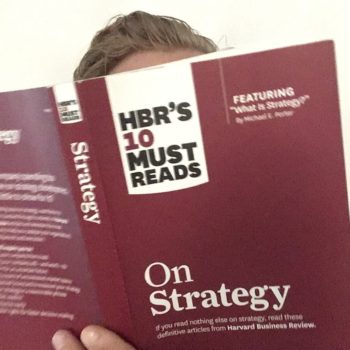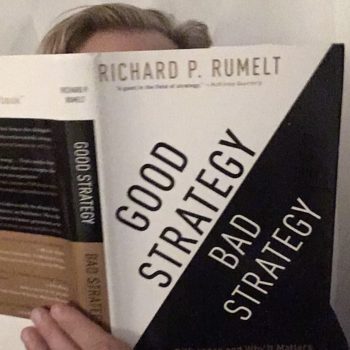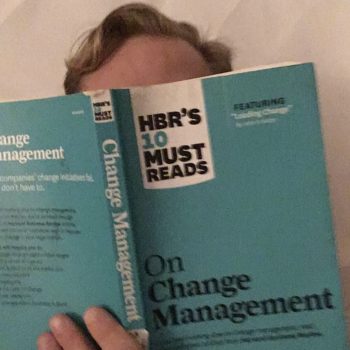How strongly do I recommend On Strategy?
6 / 10
Review of On Strategy
On Strategy is a collection of HBR essays and about half are worth reading. But that half is really worth reading – especially these three:
- What Is Strategy? by Michael Porter
- The Five Competitive Forces That Shape Strategy by Michael Porter
- Building Your Company’s Vision by James Collins and Jerry Porras
If you’re interviewing for a job, even an individual contributor job like software engineer, I think you should ask your interviewers what the company strategy is. That will clearly tell you whether they have a strategy, how well that strategy is understood across the organization, and how much autonomy you will have in your role to execute on that strategy.
Top Ideas in This Book
- People mistake lean management tools and efficiencies for business strategy
- The essence of strategy is activities, not customer personas
- Competitive advantage comes from how activities fit together and reinforce each other
- If there are no trade-offs, it is not a strategy
- The desire and expectation for growth makes managers and executives fear tradeoffs and therefore strategy
- Decision making autonomy and information flow are the most important factors in a company’s ability to execute a strategy
People mistake lean management tools and efficiencies for business strategy
Following the rise of lean management, kanban, and six sigma, the business world including software has confused efficiency with business strategy.
The author of What Is Strategy?, Michael Porter, points out that very few Japanese companies employ strategy and that most just copy competitor capabilities with more efficient production processes.
For software leaders, the message is to yes focus on lean management techniques and metrics you see in books like Accelerate and The Lean Startup, but to also ensure that you develop a strategy beyond production efficiencies.
The essence of strategy is activities, not customer personas
When asked about strategy many people default to customer personas, saying things like, “We focus on busy and cost-conscious families.” But that isn’t a strategy.
Strategy is about doing different activities or doing the same activities in different ways.
Competitive advantage comes from how activities fit together and reinforce each other
The best strategies include multiple activities that fit together (software developers call this cohesion) and reinforce each other. This creates a system where virtuous cycles can rise and the whole is more than the sum of its parts.
If there are no trade-offs, it is not a strategy
Strategy requires the business to make tradeoffs. No tradeoffs? Then you’re not executing a strategy. Intuitively and rationally the need for tradeoffs makes sense, but business decisions are often driven by emotion – especially fear.
The desire and expectation for growth makes managers and executives fear tradeoffs and therefore strategy
The expectation for growth, especially profitable growth, leads us to fear tradeoffs. We want it all.
But strategy requires tradeoffs and its important for leadership to clearly articulate those tradeoffs when communicating strategy down through the organization.
Decision making autonomy and information flow are the most important factors in a company’s ability to execute a strategy
That decision making and information flow are critical to strategy execution is no surprise to anyone familiar with Daniel Pink’s model of Autonomy, Mastery, and Purpose. Autonomy is built on ensuring access to the right information and empowering them to make decisions.
Where management goes wrong is believing they need to control information and make all the decisions. Instead they need to drive the strategy down through the organization and reinforce principles so their people can make informed decisions in the best interest of the business. Many executives cognitively believe this but don’t believe it in their gut.


